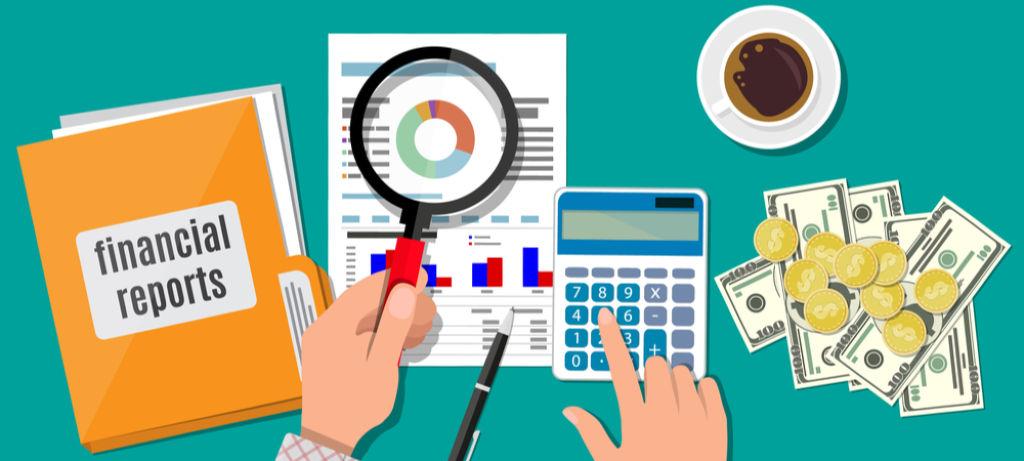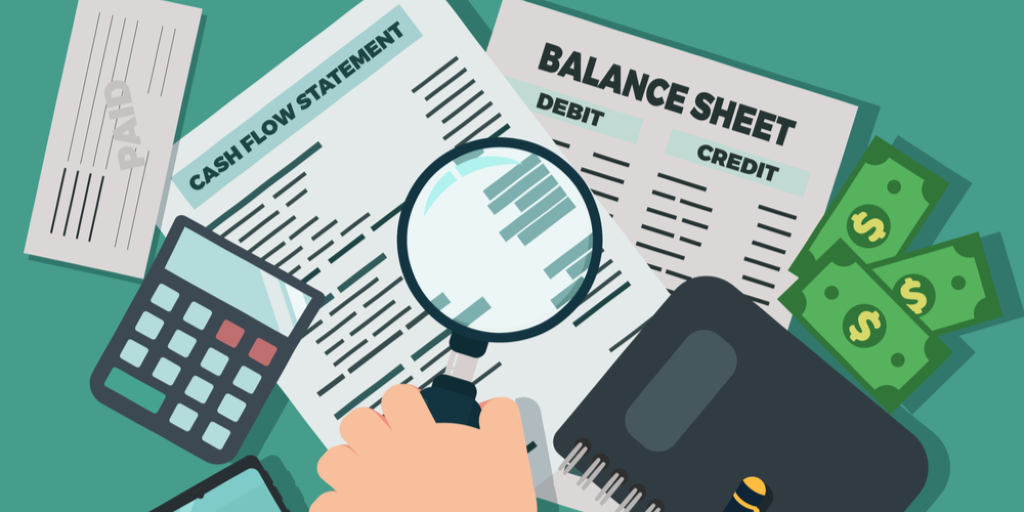How to Read Financial Statements | Investing for Beginners

- A company’s balance sheet provides a snapshot of the company’s financial position.
- A company’s income statement shows the company’s gains and losses.
- A company’s cash flow statement shows how much cash is coming in and out of the business.
It can be challenging to determine which investments will be profitable in the long run when starting to invest. Investing is a game of speculation, and the goal is to try and gather as much information as possible to make an informed decision and minimize your chances of risking your hard-earned money.
One method many investors use to obtain their necessary information regarding which companies to invest in is reading its annual reports, balance sheets, income statements, and cash flow statements. This article will break down financial statements for novice investors and explain the critical parts.
A company’s set of financial statements includes many indicators of its financial health and whether it is a good investment or if you should stay away from it. However, reading and analyzing this information can sometimes be challenging to do, especially without guidance. Below are some essential indicators to look out for when reading a company’s financial statements to understand its performance better.
Balance Sheet
A balance sheet is a financial statement that provides a snapshot of the company’s operations. For example, it shows the number of assets they own, the liabilities they owe, and how much money is invested in the company through the shareholder’s equity section.
Liabilities
This section on the balance sheet displays the amount of money the company owes to external creditors. A key indicator to look for under the Liabilities section is the Debt Ratio. The Debt Ratio is calculated by dividing total liabilities by total assets. This ratio determines how much influence creditors have over the corporation.
The closer the ratio is to 1, the more influence creditors have over the corporation to partake in activities to accelerate the timeline in which they receive their money. However, these activities may not always be aligned with the company’s long-term plans and affect its long-term goal. Therefore, when calculating the debt ratio, it is ideal to find a company that has a debt ratio lower than 0.4, as it is deemed less risky by investors.

Image Credit: Shutterstock.com
Shareholder’s Equity
The last section on the section of the balance sheet is the Shareholder’s Equity. This section consists of three sections, common shares, preferred stock, and retained earnings. These three sections display the amount of money invested in the company.
The common shares section of the balance sheet indicates the amount of capital gained when initially offering shares to the general public. This value does not change when the share price fluctuates but when the company decides to offer more or reduce the number of shares in circulation.
The preferred stock section on the balance sheet displays the value of the preferred stock in circulation to the reader. Similar to the common shares section, this section’s value does not change unless there is a change in the number of shares in circulation.
Lastly, the retained earnings section of the balance sheet indicates the amount of net income retained by the company during that period. Some companies’ board of directors decide to issue dividends to their shareholders to incentivize investors holding their shares. Though this strategy is beneficial to the company’s shareholders, it also affects their net income as the issuance of dividends is an expense, leaving the company with less money to try and expand its operations.
Statement of Income
The income statement provides an overview of all the revenue and expenses that occurred during a fiscal quarter. This statement helps give the reader information regarding the profitability of the company’s operations.
Revenue
The revenue section of the income statement displays the different types of income generated through the period. Ideally, when comparing financial statements to previous years, it is essential to see the revenue increase each year. This is because an increase in revenue displays a growing and more efficient business.
Expenses/Costs
The expense section of the income statement lists the different types of expenses accrued in the same period in which income was generated. In addition, some operating expenses cannot be avoided, such as wages, materials, income tax, and maintenance.
However, companies may incur expenses that could have been prevented. Therefore, always keep an eye on previous expenses and see if they increase, decrease, or stay the same. If a company’s costs increase while its revenue is not, it loses money and should not be considered a reasonable investment.
Net Income
The net income is calculated by subtracting the expenses earned during that quarter or year from the period’s revenue. If this value is positive, then the company made a profit during that period. However, if the company has a negative net income or net loss, then the company is losing money each period, which is a red flag for those looking to invest in the company.
Cash Flow Statement
The Cash Flow Statement highlights how the company utilizes its cash. As large corporations deal with thousands of daily transactions, the cash flow statement has been separated into three separate sections to understand better where the money is going.
Cash Flow from Operations
Cash Flow from Operations deals with the money brought in from day-to-day activities. The primary source of cash from daily operations is cash and debit card transactions. Credit cards are not included in this section as they take a couple of days to process.
Cash Flow from Investing
Cash Flow from Investing deals with the cash transactions that occur with long-term assets, which can help the corporation make a profit. For example, if a company wanted to purchase a truck, then this transaction would be highlighted under this section as a negative cash flow. It is labeled a negative cash flow because cash is leaving the company in exchange for an asset.
On the other hand, if a company wanted to sell an asset, it would have the opposite effect as it would now be counted as a positive cash flow since they are receiving cash for the asset they are selling.
Cash Flow from Financing
The last part of the cash flow statement is the “Cash Flow from Financing” section. This section deals with the transactions related to the company’s money from creditors, through loans, and investors, through initial public offerings (IPOs), and bonds.

Image Credit: Shutterstock.com
Whenever the company receives cash through one of these two methods, it is regarded as a positive cash flow as money is coming in. On the other hand, if they were to pay off their loans to repurchase outstanding shares, this would be a negative cash flow.
There is no black and white answer regarding cash flows, as the cash flow should differ for each company. For example, companies that are expanding typically have a positive cash flow for Operations and Financing. However, their Investing cash flow is negative as they purchase equipment to help them make a profit in the future.
Furthermore, a more established company that is not looking to expand may have a negative cash flow in its financing section. Because they are trying to repay their loans, their Operations and Investing cash flows are positive as they are making money from their daily operations and selling the assets that they no longer find useful.
Comparing the Percentages
As financial statements are vital to an investor’s knowledge of the company’s operations, larger public companies have a column showing the percentage increase or decrease for an account. Depending on the type of account, an increase in the percentage may be beneficial or detrimental.
For example, asset, equity, and income accounts should ideally increase in value after every accounting period, indicating that the company’s operations are expanding and vice versa. Therefore, it is vital to compare these values going back a couple of years to better understand the company’s past financial performance.
Furthermore, liabilities and expenses should hopefully decrease in value, negatively affecting a corporation’s financial position and profitability. For example, when a company’s operations are expanding, it is essential to see how much the expenses are increasing or decreasing. Suppose the expenses’ percentage change is bigger than the revenue’s percentage change. In that case, the company is making less money than before as the costs take up a higher chunk of the revenue, leaving less room for profits and vice versa.
What other pieces of information do you look at before investing? Let us know in the comments below.
Main Image Credit: Shutterstock.com